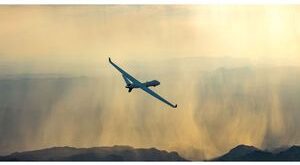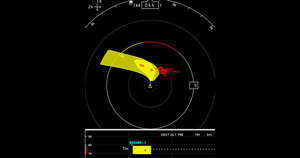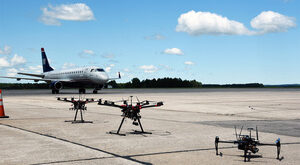As General Atomics Aeronautical Systems, Inc. (GA-ASI) continues towards its development goal of earning Technical Standard Order (TSO) authorization from the FAA for its internally developed Detect and Avoid (DAA) system, the company has selected Belgium-based ScioTeq to supply a certified processor and display for its DAA solution. ScioTeq is …
Read More »DDC and Pegasus Imagery sign MOU for Detect and Avoid Techno…
Drone Delivery Canada Corp. (TSXV: FLT; OTC QX: TAKOF; Frankfurt: A3DP5Y or ABBA.F) (the “Company” or “DDC”) announced that it has signed a memorandum of understanding with Pegasus Imagery Ltd. (“Pegasus”) to work together to develop and implement on board detect and avoid technology (“DAA”) for DDC’s heavy lift Condor …
Read More »GA-ASI Completes New Set of UAS Detect and Avoid Flights for…
By General Atomics Aeronautical Systems, Inc. | March 30, 2022 SAN DIEGO – 28 March 2022 – General Atomics Aeronautical Systems, Inc. (GA-ASI) recently completed a series of test flights for the FAA to demonstrate mature Detect and Avoid (DAA) technology for Unmanned Aircraft Systems (UAS). DAA systems …
Read More »NUAIR & Sagetech Avionics to test Detect and Avoid Technolog…
(SYRACUSE, NEW YORK) – Sagetech Avionics Inc., a U.S. aerospace technology company providing industry-leading situational awareness solutions for crewed and uncrewed aerial systems, and NUAIR (Northeast UAS Airspace Integration Research Alliance, Inc.) a New York based nonprofit with a mission to safely integrate uncrewed aircraft systems (UAS) into …
Read More »Top 5 Reasons Startups fail & How to avoid these Mistakes
January 6, 2021 By Veronica Hanks in Business Marketing Thousands of new companies pop up each week from motivated people who have a unique idea and the ambition to bring it to life. Many of these companies make it big, however, most of them fail in the initial 5 years. …
Read More »Swiss Researchers Develop Fast ‘Detect and Avoid’ Tech
University of Zurich researchers have developed technology that will enable drones to detect and avoid other fast-moving objects in as little as 3.5 milliseconds using special event cameras and newly developed algorithms. The reaction time makes the aircraft “nearly” as reliable as human pilots and is directed at beyond visual …
Read More » Unmanned Aerial Vehicle The latest drone news
Unmanned Aerial Vehicle The latest drone news





